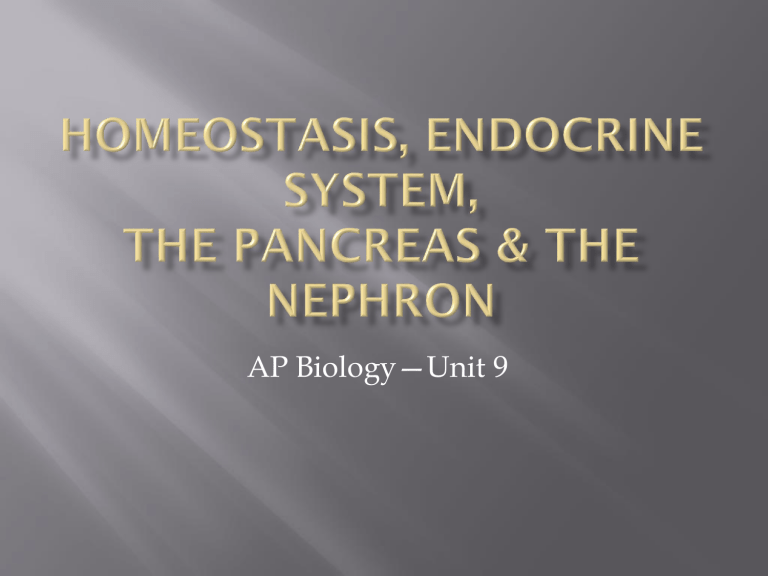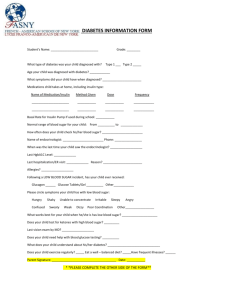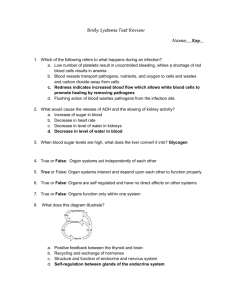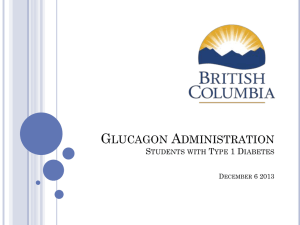Homeostasis & the Pancreas

AP Biology—Unit 9
Definition: maintaining a stable internal environment.
Fluctuates within the bounds of “normal.”
Feedback mechanisms to control homeostasis
Positive Feedback—an increase in a variable triggers a mechanism that amplifies the variable
Negative Feedback—an increase in a variable triggers a response that counteracts the initial change
Thermoregulation—regulation of body temperature
By what feedback loop do animals regulate body temperature, positive or negative?
What are some adaptations that help organisms regulate their temperature?
Define the following types of
INTERCELLULAR COMMUNICATION:
Endocrine Signaling
Paracrine
Synaptic
Endocrine System—sum of all the cells and tissues that secrete hormones
Endocrine Glands—secrete hormones directly into body fluids. They do not have ducts.
Hormones—chemical signals that cause a response in a target cell.
Water-Soluble (Hydrophilic)—cannot go through plasma membrane, so bind to receptor proteins
Lipid-Soluble (Hydrophobic)—diffuse through plasma membrane and bind to intracellular receptor
Gutsman
Both an Endocrine and Exocrine gland
Endocrine—_________________________________
(i.e. pituitary, thyroid, etc.)
Exocrine—secretes “stuff” that goes into a duct
(i.e. liver, salivary gland)
Exocrine—Secretes Pancreatic Juice through the
Pancreatic Duct to the Small Intestines
Pancreatic Juice Contains—
Bicarbonate—buffers stomach acid
Digestive Enzymes
Endocrine—regulate blood glucose by negative feedback
Beta cells—make Insulin
Insulin tells cells to take in sugar
Increased insulin causes decrease in blood sugar
Alpha Cells—make Glucagon
Glucagon tells cells to convert glycogen to glucose
Increased glucagon causes increase in blood sugar
Steps:
Eat—Blood sugar increases
Insulin increases—cells take in glucose which decreases blood sugar
Liver converts excess glucose to glycogen
Blood sugar decreases, and so insulin decreases
As blood sugar begins to dip, glucagon increases and tells liver to convert glycogen to glucose
Blood glucose increases
Homeostasis: Regulating Blood Sugar Movie
Draw a diagram of the feedback system that controls blood sugar levels!
Prostagladins (local regulators) and Estradiol and Oxytocin (hormones) regulate the contractions of the uterus
Oxytocin forms a positive feedback loop— uterine contractions stimulate the secretion of more oxytocin
Kidneys—filter blood; maintain water balance
Parts of Nephron—functional unit of kidney
Glomerulus / Bowman’s Capsule
Proximal & Distal Convoluted Tubules
Loop of Henle
Collecting Duct
Processes
Filtration
Reabsorption
Secretion
Excretion
Antidiuretic Hormone (ADH)
Produced by hypothalamus
Receptor cells in hypothalamus sense osmolarity in the blood (more solutes/salts = higher osmolarity)
If osmolarity increases, ADH is released
ADH binds to receptor proteins on the cells in the collecting duct of nephron
This increases permeability of these cells for water— causing water to be reabsorbed into the blood
Result = more water in blood = decrease in osmolarity
Aldosterone
Produced in Adrenal Glands
Stimulated by cascade of events between renin and angiotensin when blood pressure and / or blood volume decreases in artioles that supply blood to glomerulus
Aldosterone acts on distal tubule and collecting duct
Increases reabsorption of Na + and water = increase in blood volume = increase in blood pressure





